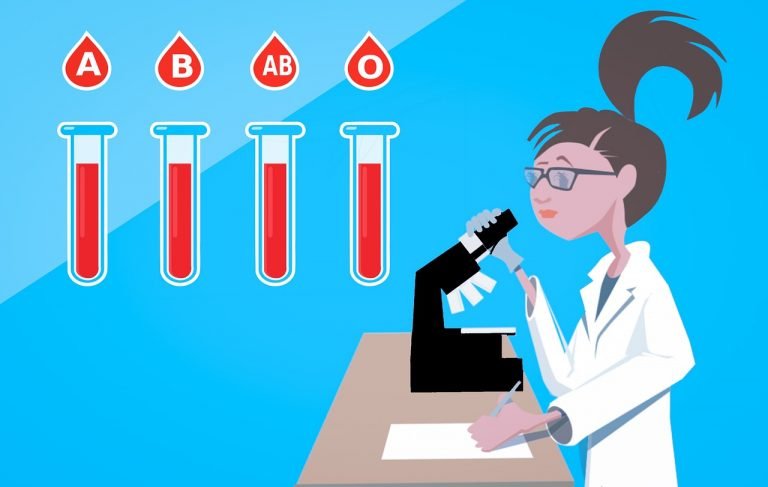Understanding the Different Types of Diabetes
Table of Contents
Understanding the Different Types of Diabetes
Type 1 Diabetes
Causes and Risk Factors
Causes and Risk Factors
The development of diabetes can be attributed to a combination of genetic and environmental factors. Type 1 diabetes is primarily caused by an autoimmune response, where the body’s immune system mistakenly attacks and destroys the insulin-producing cells in the pancreas. Although the exact triggers for this autoimmune response are still unknown, it is believed that genetic predisposition plays a significant role. On the other hand, type 2 diabetes is largely influenced by lifestyle factors such as obesity, physical inactivity, and poor dietary choices. While genetics can also contribute to type 2 diabetes, it is more commonly associated with modifiable risk factors. Additionally, gestational diabetes, which occurs during pregnancy, is thought to be influenced by hormonal changes and genetic factors. Understanding the causes and risk factors associated with each type of diabetes is crucial in developing effective prevention strategies and personalized treatment plans.
Symptoms and Diagnosis
Symptoms and Diagnosis
Recognizing the symptoms of diabetes is crucial for early detection and effective management. The most common symptoms include frequent urination, excessive thirst, unexplained weight loss, constant fatigue, and blurred vision. Additionally, individuals may experience slow-healing wounds, recurring infections, and tingling sensations in their hands or feet. If any of these symptoms are present, it is important to seek medical attention promptly. A healthcare professional will conduct various tests to diagnose diabetes, such as blood sugar level measurements, oral glucose tolerance tests, and glycated hemoglobin (A1C) tests. These diagnostic tools help determine the type of diabetes and guide the development of an appropriate treatment plan. Early diagnosis and intervention can significantly improve the quality of life for individuals living with diabetes.
Treatment and Management
Treatment and management of diabetes vary depending on the type of diabetes a person has. For individuals with type 1 diabetes, treatment typically involves daily insulin injections or the use of an insulin pump to regulate blood sugar levels. Regular monitoring of blood glucose levels is crucial, and a healthy diet and regular exercise are also important components of managing type 1 diabetes. On the other hand, individuals with type 2 diabetes may initially be able to control their blood sugar levels through lifestyle changes such as adopting a balanced diet, increasing physical activity, and losing weight. However, medication or insulin therapy may be necessary if these measures are not sufficient. Regular check-ups with healthcare professionals, including monitoring blood sugar levels, are essential for effective treatment and management of both types of diabetes.
Type 2 Diabetes

Causes and Risk Factors
Causes and Risk Factors
The development of diabetes can be attributed to a combination of genetic and environmental factors. Type 1 diabetes is primarily caused by an autoimmune response, where the body’s immune system mistakenly attacks and destroys the insulin-producing cells in the pancreas. Although the exact cause is unknown, it is believed to involve a combination of genetic predisposition and environmental triggers, such as viral infections. On the other hand, type 2 diabetes is mainly influenced by lifestyle factors, including poor diet, sedentary behavior, and obesity. Genetic factors also play a role in type 2 diabetes, as individuals with a family history of the condition are at a higher risk. Additionally, certain ethnicities, such as African Americans, Hispanics, and Native Americans, have a higher prevalence of type 2 diabetes. Other risk factors include age, gestational diabetes during pregnancy, and certain medical conditions like polycystic ovary syndrome (PCOS). Understanding the causes and risk factors associated with different types of diabetes is crucial in developing effective prevention strategies and personalized treatment plans.
Symptoms and Diagnosis
Symptoms and Diagnosis
Recognizing the symptoms of diabetes is crucial for early detection and effective management. The most common symptoms include frequent urination, excessive thirst, unexplained weight loss, constant fatigue, and blurred vision. Additionally, individuals with diabetes may experience slow healing of wounds, recurring infections, and tingling or numbness in their hands or feet. If you notice any of these symptoms, it is important to consult a healthcare professional for a proper diagnosis. Diagnosis typically involves a series of tests, including blood sugar level measurements, oral glucose tolerance tests, and glycated hemoglobin (A1C) tests. These tests help determine the type of diabetes and its severity, enabling healthcare providers to develop an appropriate treatment plan tailored to the individual’s needs.
Treatment and Management
Treatment and management of diabetes vary depending on the type of diabetes a person has. For individuals with type 1 diabetes, treatment typically involves daily insulin injections or the use of an insulin pump to regulate blood sugar levels. Regular monitoring of blood glucose levels is crucial, and a healthy diet and regular exercise are also important components of managing type 1 diabetes. On the other hand, for individuals with type 2 diabetes, treatment often begins with lifestyle changes such as adopting a balanced diet, increasing physical activity, and losing weight if necessary. In some cases, oral medications or insulin therapy may be prescribed to help control blood sugar levels. Regular monitoring of blood glucose levels and routine check-ups with healthcare professionals are essential for effective treatment and management of both types of diabetes.
Gestational Diabetes

Causes and Risk Factors
Causes and Risk Factors
The development of diabetes is influenced by a combination of genetic and environmental factors. Type 1 diabetes is primarily caused by an autoimmune response, where the body’s immune system mistakenly attacks and destroys the insulin-producing cells in the pancreas. Although the exact triggers for this autoimmune response are still unknown, it is believed that certain genetic predispositions, as well as exposure to certain viruses or environmental factors, may play a role. On the other hand, type 2 diabetes is largely influenced by lifestyle factors such as poor diet, sedentary behavior, and obesity. While genetics also contribute to the risk of type 2 diabetes, it is often preventable or manageable through lifestyle modifications. Additionally, gestational diabetes, which occurs during pregnancy, is thought to be caused by hormonal changes and increased insulin resistance. Women who are overweight, have a family history of diabetes, or have previously given birth to a large baby are at a higher risk of developing gestational diabetes. Understanding the causes and risk factors associated with each type of diabetes is crucial in order to effectively prevent, manage, and treat this chronic condition.
Symptoms and Diagnosis
Symptoms and Diagnosis
Recognizing the symptoms of diabetes is crucial for early detection and effective management. Common symptoms of diabetes include frequent urination, excessive thirst, unexplained weight loss, constant fatigue, and blurred vision. It is important to note that these symptoms may vary depending on the type of diabetes. To diagnose diabetes, healthcare professionals typically conduct blood tests to measure blood glucose levels. The most common tests include fasting plasma glucose (FPG) and oral glucose tolerance test (OGTT). These diagnostic tests help determine whether an individual has diabetes and which type they may have. Early diagnosis is essential for timely treatment and preventing complications associated with diabetes.
Treatment and Management
Treatment and management of diabetes vary depending on the type of diabetes a person has. For individuals with type 1 diabetes, treatment typically involves insulin therapy, which may include multiple daily injections or the use of an insulin pump. Regular monitoring of blood sugar levels is crucial, and a balanced diet and regular exercise are also important for managing this condition. In contrast, individuals with type 2 diabetes may initially be able to manage their blood sugar levels through lifestyle changes such as adopting a healthy diet and increasing physical activity. However, medication or insulin therapy may be necessary if these measures are not sufficient. Additionally, regular monitoring of blood sugar levels, maintaining a healthy weight, and managing other health conditions are essential for effectively treating and managing type 2 diabetes. Overall, a personalized treatment plan, developed in collaboration with healthcare professionals, is crucial for effectively managing diabetes and minimizing the risk of complications.
Prediabetes

Definition and Risk Factors
Definition and Risk Factors
Diabetes is a chronic medical condition characterized by high blood sugar levels. There are several types of diabetes, including type 1, type 2, and gestational diabetes. Type 1 diabetes occurs when the body’s immune system mistakenly attacks and destroys the insulin-producing cells in the pancreas. This type of diabetes is usually diagnosed in childhood or adolescence and requires lifelong insulin therapy. On the other hand, type 2 diabetes is the most common form and is often associated with lifestyle factors such as obesity, physical inactivity, and poor diet. It occurs when the body becomes resistant to insulin or fails to produce enough insulin to regulate blood sugar levels effectively. Lastly, gestational diabetes develops during pregnancy and usually resolves after childbirth. It is important to note that certain risk factors, such as family history, obesity, age, and ethnicity, can increase the likelihood of developing diabetes. Understanding these different types of diabetes and their associated risk factors is crucial for effective management and prevention of this widespread condition.
Symptoms and Diagnosis
Symptoms of diabetes can vary depending on the type of diabetes a person has. In type 1 diabetes, symptoms often develop quickly and may include increased thirst, frequent urination, unexplained weight loss, extreme fatigue, and blurred vision. On the other hand, type 2 diabetes symptoms may develop gradually and can include increased thirst, frequent urination, fatigue, blurred vision, slow-healing sores or infections, and dark patches of skin. In both types, high blood sugar levels can lead to symptoms such as constant hunger, dry mouth, itchy skin, and tingling or numbness in the hands or feet. To diagnose diabetes, healthcare professionals may perform blood tests to measure blood sugar levels, including fasting blood sugar tests and oral glucose tolerance tests. Additionally, they may also consider symptoms, medical history, and risk factors to make an accurate diagnosis. Early detection and diagnosis of diabetes are crucial for effective management and prevention of complications.
Prevention and Management
Prevention and management play crucial roles in controlling diabetes and improving overall health. While type 1 diabetes cannot be prevented, individuals can adopt healthy lifestyle habits to reduce the risk of developing type 2 diabetes. Regular physical activity, maintaining a balanced diet, and managing weight are key preventive measures. For those already diagnosed with diabetes, effective management involves monitoring blood sugar levels, taking prescribed medications, and following a personalized meal plan. Additionally, regular exercise and stress management techniques can help in maintaining stable blood sugar levels. It is essential for individuals with diabetes to work closely with healthcare professionals to develop a comprehensive management plan tailored to their specific needs. By prioritizing prevention and effective management strategies, individuals can lead healthier lives and minimize the complications associated with diabetes.
Maturity-Onset Diabetes of the Young (MODY)

Genetic Causes and Inheritance
Genetic Causes and Inheritance
Genetic factors play a significant role in the development of diabetes, particularly in type 1 and type 2 diabetes. In type 1 diabetes, genetic susceptibility is a key factor, as certain genes are believed to increase the risk of developing the condition. These genes are involved in the regulation of the immune system, which mistakenly attacks and destroys the insulin-producing cells in the pancreas. On the other hand, type 2 diabetes has a stronger association with genetic inheritance. Studies have shown that having a family history of the disease increases the likelihood of developing type 2 diabetes. While specific genes have not been identified as the sole cause, it is believed that multiple genes, combined with environmental factors, contribute to the development of this form of diabetes. Understanding the genetic causes and inheritance patterns of diabetes is crucial in identifying individuals at risk and developing targeted prevention strategies.
Symptoms and Diagnosis
Symptoms and Diagnosis
Recognizing the symptoms of diabetes is crucial for early detection and management. The most common symptoms of diabetes include frequent urination, excessive thirst, unexplained weight loss, constant fatigue, and blurred vision. Additionally, individuals with diabetes may experience slow-healing wounds, recurring infections, and tingling or numbness in their hands or feet. To diagnose diabetes, healthcare professionals typically conduct blood tests to measure blood glucose levels. The two primary tests used for diagnosis are the fasting plasma glucose (FPG) test and the oral glucose tolerance test (OGTT). These tests help determine if an individual’s blood sugar levels are within the normal range or if they have diabetes. Early diagnosis is essential to prevent complications and initiate appropriate treatment plans.
Treatment and Management
Treatment and management of diabetes vary depending on the type of diabetes a person has. For individuals with type 1 diabetes, treatment typically involves daily insulin injections or the use of an insulin pump to regulate blood sugar levels. Regular monitoring of blood glucose levels is crucial, as well as following a healthy diet and engaging in regular physical activity. Additionally, individuals with type 1 diabetes may need to take other medications to manage associated conditions such as high blood pressure or high cholesterol. On the other hand, individuals with type 2 diabetes may initially be able to manage their condition through lifestyle changes, such as adopting a healthy diet, increasing physical activity, and losing weight if necessary. In some cases, oral medications or insulin therapy may be prescribed to help control blood sugar levels. Regular monitoring of blood glucose levels and routine check-ups with healthcare professionals are essential for effective treatment and management of both types of diabetes.
Latent Autoimmune Diabetes in Adults (LADA)

Autoimmune Causes and Progression
Autoimmune Causes and Progression
In the context of diabetes, autoimmune causes and progression refer to a specific type of the disease known as type 1 diabetes. This form of diabetes occurs when the body’s immune system mistakenly attacks and destroys the insulin-producing cells in the pancreas, called beta cells. The exact cause of this autoimmune response is not fully understood, but it is believed to involve a combination of genetic and environmental factors. Over time, as more beta cells are destroyed, the pancreas becomes unable to produce sufficient insulin, leading to high blood sugar levels. Type 1 diabetes typically develops during childhood or adolescence, but it can also occur in adults. Managing this autoimmune condition requires lifelong insulin therapy and close monitoring of blood sugar levels to prevent complications.
Symptoms and Diagnosis
Symptoms and Diagnosis
Recognizing the symptoms of diabetes is crucial for early detection and effective management. The most common symptoms of diabetes include frequent urination, excessive thirst, unexplained weight loss, constant fatigue, and blurred vision. Additionally, individuals with diabetes may experience slow-healing wounds, recurring infections, and tingling or numbness in their hands or feet. If you notice any of these symptoms, it is important to consult a healthcare professional for a proper diagnosis. Diagnosis of diabetes typically involves a series of tests, including blood sugar level measurements and oral glucose tolerance tests. These diagnostic tools help healthcare providers determine the type of diabetes and develop an appropriate treatment plan tailored to the individual’s needs. Early diagnosis and prompt intervention can significantly improve the management of diabetes and prevent potential complications.
Treatment and Management
Treatment and management of diabetes vary depending on the type of diabetes a person has. For individuals with type 1 diabetes, treatment typically involves daily insulin injections or the use of an insulin pump to regulate blood sugar levels. Regular monitoring of blood glucose levels is crucial, and a healthy diet and regular exercise are also important components of managing type 1 diabetes. On the other hand, type 2 diabetes can often be managed through lifestyle changes such as adopting a healthy diet, engaging in regular physical activity, and maintaining a healthy weight. In some cases, oral medications or insulin therapy may be prescribed to help control blood sugar levels. Additionally, individuals with gestational diabetes may need to monitor their blood sugar levels closely and make dietary adjustments to ensure the health of both themselves and their baby. Overall, effective treatment and management of diabetes require a personalized approach tailored to the specific needs and circumstances of each individual.
Next Steps
Now that you have a better understanding of the different types of diabetes, it is important to take proactive steps towards managing and treating this condition. If you or someone you know has been diagnosed with diabetes, it is crucial to consult with a healthcare professional to develop an individualized plan. This may include lifestyle changes such as adopting a healthy diet, engaging in regular physical activity, and monitoring blood sugar levels. Additionally, staying informed about the latest advancements in diabetes research and treatment options is essential. To stay updated and explore potential cures for diabetes, visit https://curefordiabetes.net/ and join the fight against this chronic disease. Remember, with proper management and ongoing support, individuals with diabetes can lead fulfilling and healthy lives.







